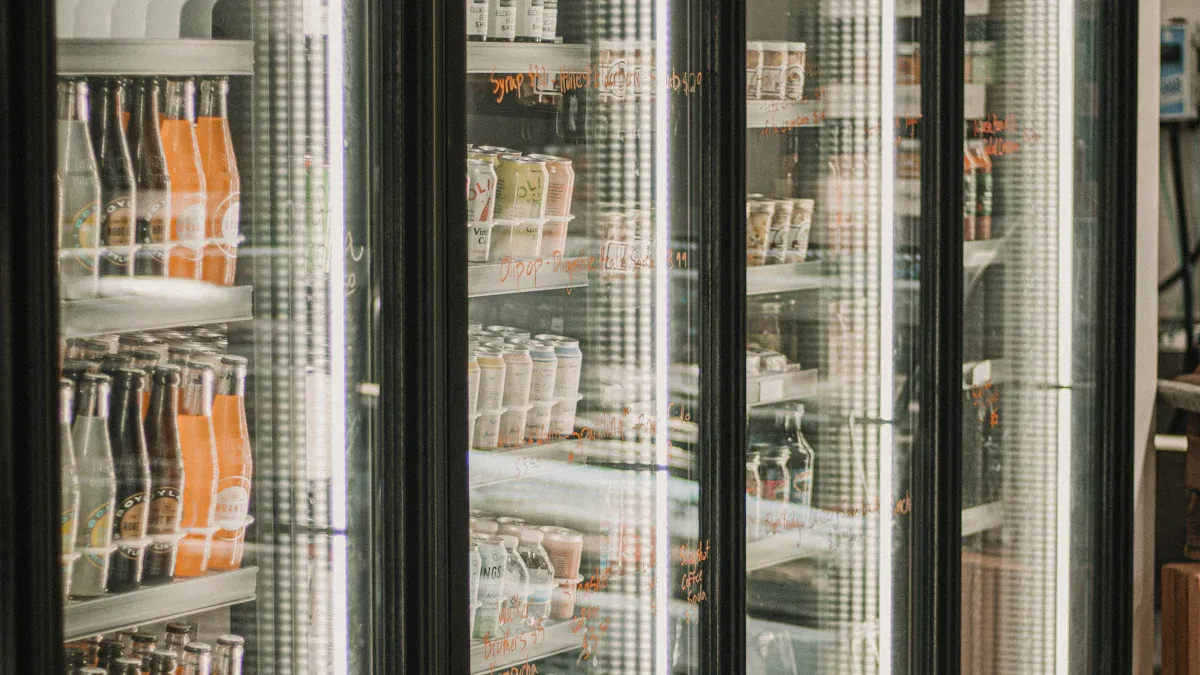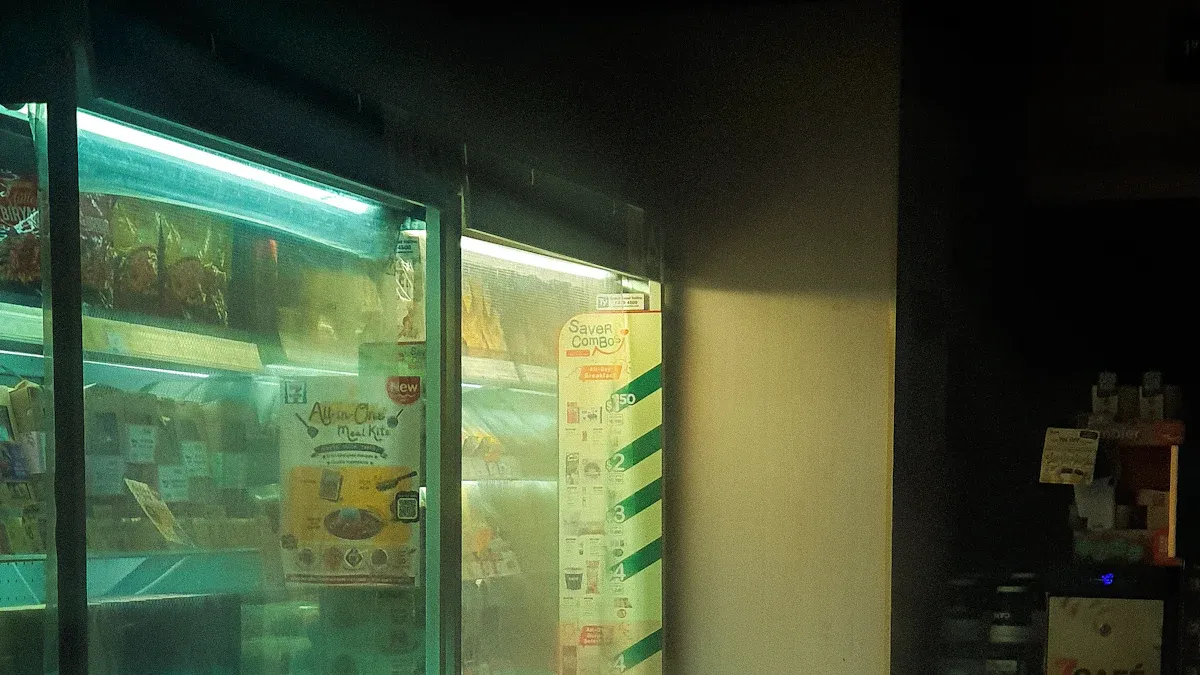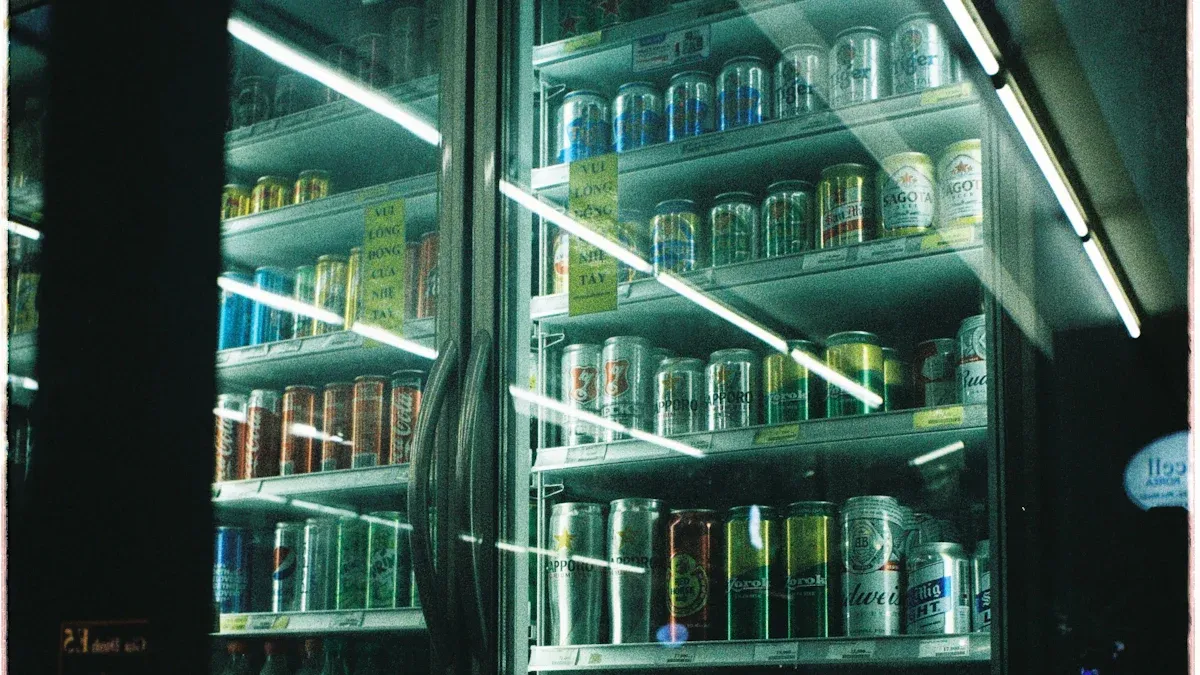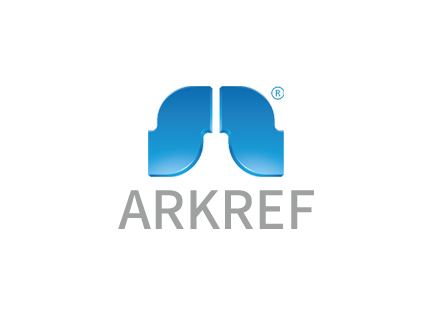How to Choose the Right Display Walk In Cooler for Your Business

Choosing the right display walk in cooler matters for your business. You keep products fresh, safe, and ready for customers. You can boost your sales and save energy with the right equipment. Think about what you want to show, what you need to store, and how you run your daily operations. This decision shapes your business success.
Key Takeaways
Understand what you need to store so you can pick a cooler that keeps things fresh and safe. Make sure you know what products you have. Think about how much space you need for them. Measure your area well and plan for easy ways to get in and out. Think about how your business might grow later. Pick a cooler size that fits your stock and how many customers you have. This helps you not waste energy or make the cooler too full. Look for coolers with glass doors, LED lights, and strong shelves. These features help show off your products and save energy. Follow health and safety rules. Keep your cooler clean. Work with good suppliers for setting up and fixing your cooler.
Business Needs
Product Types
You need to know what products you plan to store in your walk-in cooler. Different items have different storage needs. Most retail and foodservice businesses use walk-in coolers for fresh and perishable foods. You might store bakery goods, deli meats, cheeses, candy, seafood, or desserts like gelato. Each product type needs a certain temperature and humidity level to stay fresh. For example, bakery goods and deli items often need temperatures between 32°F and 40°F. Seafood and gelato also require strict temperature control. When you choose a walk-in, check if the cooler can keep your products safe and fresh.
Tip: Make a list of all the products you want to display and store. This helps you pick the right walk-in cooler for your business.
Storage Volume
Think about how much inventory you need to keep on hand. The size of your walk-in cooler should match your daily and weekly storage needs. If you run a bakery, you may need space for trays of bread and pastries. A deli might need shelves for meats and cheeses. Seafood businesses often need extra room for large containers. Too small a walk-in means you run out of space. Too large a walk-in wastes energy and money. Measure your average stock and plan for busy times. This helps you avoid overcrowding and keeps your products easy to reach.
Ask yourself:
How many products do you store each day?
Do you get large deliveries or small, frequent shipments?
Will you expand your product line soon?
Display Goals
Your display walk in cooler does more than store products. It also helps you show off your items to customers. Decide what you want people to see when they look inside your walk-in. Some businesses want to highlight fresh bakery goods or colorful produce. Others want to make deli meats or desserts stand out. The right walk-in cooler lets you arrange products for easy viewing and quick access. Glass doors and bright lighting help customers see what you offer. Custom shelving can help you organize products by type or brand.
Note: Clear display goals help you choose a walk-in cooler that supports your sales and branding. Think about how you want your products to look and how customers will interact with them.
Space and Layout

Measure Area
First, measure the space where you want your walk-in. Use a tape measure to check the length and width. Remember to measure the ceiling height too. You need enough height for the walk-in and its refrigeration system. Leave space for people to walk around the walk-in. Make sure the doors can open all the way. If you want to grow your business, think about extra space for a bigger walk-in later.
Tip: Draw a simple map of your floor. Show where the walk-in will go. Mark any things in the way like pillars, vents, or low ceilings.
Access Points
Access points are important when putting in a walk-in. Check if doors, halls, and loading docks are wide enough for delivery. Sometimes, wiring inside the walk-in is a problem. The metal walls can block Wi-Fi, so you might need access points inside. Power cables for chiller units can get hot and hurt network cables. To stop this, run network and power cables in different pipes. This keeps heat and interference away. Use wiring that can handle moisture and sealed boxes to stop rust. Always follow safety rules and ask experts for help with hard wiring.
Common problems with walk-in access points:
Doorways or corners that are too small
Wi-Fi signals blocked inside the walk-in
Network cables getting too hot
Power wiring causing interference
Installation
You need to plan well before installing a walk-in. Modular cam-lock panels make it easier. These panels snap together and fit in small or odd spaces. Many suppliers can ship fast for quick setup. Always work with HVAC and electrical experts. They help you avoid wiring issues and keep the walk-in safe. Good installation helps your walk-in work well for a long time.
Note: Careful planning and expert help stop expensive mistakes when you install your walk-in.
Walk-In Cooler Size
Capacity
You need to choose a walk-in cooler that matches your storage needs. Start by looking at your daily and weekly inventory. If you store a lot of products, you need a larger walk-in. A small walk-in cooler works for businesses with less stock. Make a list of all items you plan to keep inside. Think about busy seasons when you might need extra space. You want to avoid overcrowding your walk-in cooler. Overcrowding can block airflow and cause uneven cooling. If you have too much empty space, your walk-in cooler will waste energy. You pay more for cooling air instead of products.
Tip: Use shelving to organize your walk-in. Shelves help you use every inch of space and keep products easy to find.
Customer Traffic
Customer flow also affects the size of your walk-in cooler. If customers enter the walk-in to pick products, you need enough room for them to move around. A narrow walk-in can feel crowded and uncomfortable. You want customers to see all your products without bumping into each other. If staff only access the walk-in, you can choose a smaller size. Think about how many people use the walk-in at the same time. More traffic means you need a wider or longer walk-in cooler.
A larger walk-in cooler uses more energy. You pay higher utility bills if you pick a size that is too big for your needs. A walk-in that fits your business saves money and keeps products fresh. The right size also helps your walk-in last longer because it does not work harder than needed.
Note: Measure your space and watch how people move in your store. This helps you pick the best walk-in cooler size for your business.
Display Walk In Cooler Features

Glass Doors
Glass doors play a big role in how you show your products. When you use large glass doors on your walk-in, customers can see everything inside without opening the door. This makes shopping easier and helps you sell more. LED lighting inside the display walk in cooler makes your products look bright and fresh. You can use double or triple pane glass for better insulation. This keeps the cold air inside and saves energy. Anti-fog glass keeps the view clear, even when the temperature changes. You do not have to worry about doors fogging up and hiding your products. Many walk-in coolers use energy-efficient compressors and eco-friendly refrigerants. These features help you lower your energy bills and protect the environment.
Benefits of glass doors in a walk-in cooler:
Show off products to boost impulse buys
Keep cold air in with strong insulation
Stop fog from blocking the view
Use less energy with LED lights and smart compressors
Tip: Choose glass doors with anti-fog and LED lighting for the best product display and energy savings.
Lighting
Lighting inside your walk-in makes a big difference. Bright, even light helps customers see every item. LED lights work best in a display walk in cooler. They use less energy than old-style bulbs and last longer. You can place lights above shelves or along the sides. This setup makes sure every product gets noticed. Good lighting also helps your staff find items quickly. You can pick cool white lights for a clean look or warm lights for a cozy feel. Some walk-in coolers let you adjust the brightness. This gives you control over how your products look at different times of day.
Note: Well-placed lighting not only saves energy but also makes your products stand out.
Shelving
Shelving helps you organize your walk-in cooler. You can use wire racks, solid shelves, or custom units. Wire racks let air move around your products. This keeps everything cool and fresh. Solid shelves work well for small items or things that might leak. Adjustable shelves let you change the layout as your needs grow. You can group products by type, brand, or size. This makes it easy for customers and staff to find what they need. Strong shelves hold heavy items like drinks or large boxes. You can also use angled shelves to show off special products.
Types of shelving for walk-in coolers:
Wire racks for airflow
Solid shelves for small or leaky items
Adjustable shelves for flexible storage
Angled shelves for better display
Tip: Plan your shelving to match your product mix and make restocking simple.
Aesthetics
A walk-in cooler does more than store products. It also shapes how people see your business. Modern walk-in coolers come in many styles and finishes. You can pick sleek metal, glass, or custom colors to match your brand. Some walk-in coolers use smart sensors and advanced humidifiers. These features keep products fresh and add a high-tech feel. Modular designs fit into small or unique spaces. This helps you use every inch of your store. High-end finishes and smart technology make your business look modern and professional. Customers notice these details and remember your brand. Many luxury brands use stylish walk-in coolers to stand out. You can work with suppliers to design a display walk in cooler that fits your space and brand image.
How walk-in cooler aesthetics help your business:
Match your store’s style and colors
Add smart features for better control
Use modular designs for any space
Show customers you care about quality and design
Note: A well-designed walk-in cooler can boost your brand and make shopping a better experience.
Commercial Walk-In Cooler Efficiency
Energy Ratings
When you pick a commercial walk-in cooler, saving energy is very important. Look for the ENERGY STAR label. This label means your walk-in cooler uses less energy. New compressor technology, like variable-capacity compressors, helps you save power every day. Good insulation in the doors and panels keeps cold air inside. Eco-friendly refrigerants, such as R290, help the planet and follow the rules. You can check the U.S. Department of Energy’s Compliance Certification Database to see the energy ratings of your commercial walk-in cooler.
ENERGY STAR certification helps you pay less for energy.
Variable-capacity compressors change to fit your cooling needs.
Eco-friendly refrigerants are better for the earth.
Certified insulation keeps your walk-in cooler working well.
Tip: Always ask your supplier to show proof of energy ratings before you buy a commercial walk-in cooler.
Insulation
Insulation is very important for your commercial walk-in cooler. The right insulation keeps cold air in and warm air out. This helps your walk-in cooler use less energy and keeps food safe. Check the table below for important insulation features:
Feature | Detail |
|---|---|
Insulation Thickness | |
Insulation Material | High-density panels with R-32 rating |
Temperature Retention | Great because of high R-value insulation |
Energy Efficiency Impact | Stops heat from getting in, saves energy |
Additional Features | UL/NSF-approved panels, self-closing door with tight seal |
Warranty | 50-year thermal panel warranty |
Note: Good insulation keeps your commercial walk-in cooler cold even when it is hot outside.
Temperature Control
Good temperature control is very important for any commercial walk-in cooler. Modern walk-in coolers use high-efficiency compressors, strong polyurethane insulation, and tight gasket seals. Smart temperature controls with built-in diagnostics help you keep the right temperature all the time. Some systems have dual-zone refrigeration, so you can store different products at the best temperatures. Wireless monitoring systems send alerts if the temperature changes, so you can fix problems fast. Automated cloud-based logs help you keep records for food safety rules. Predictive diagnostics can warn you about problems before they happen. These features keep your temperature-controlled storage safe and dependable.
Humidity Control
Humidity control in your commercial walk-in cooler helps keep products fresh for longer. Humidity systems keep the right amount of moisture, so fruits and vegetables do not dry out. Controlled atmosphere storage slows down spoilage by managing humidity, temperature, and gases. For example, mango ripening chambers keep humidity between 85% and 95% for perfect ripening. With the right humidity, you waste less and keep your products looking and tasting great.
Keeps moisture in for longer shelf life
Slows spoilage and keeps products fresh
Helps fruits, vegetables, and other perishables stay good
Tip: Ask your supplier about humidity control choices for your commercial walk-in cooler to protect your products.
Compliance and Budget
Health Codes
You have to follow health codes when you get a walk-in cooler. Local and state rules tell you how to keep food safe in your commercial walk-in cooler. Health inspectors check if you store food right and keep things clean. You must keep your walk-in cooler at the right temperature for each product. Use a thermometer to check the temperature every day. Clean the inside often so mold and bacteria do not grow. Store food off the floor and use shelves that are easy to clean. Always look at your local health department’s rules before you buy a walk-in.
Tip: Keep a cleaning and temperature log for your walk-in cooler. This helps you pass inspections and keeps your products safe.
Safety
Safety is important for you, your staff, and your customers. Your commercial walk-in cooler should have a door that opens from the inside. This stops people from getting stuck. Put bright lights inside so everyone can see well. Use non-slip mats on the floor to stop falls. Make sure the walk-in cooler has alarms for high temperatures or power loss. These alarms warn you if something is wrong. Always teach your staff how to use the walk-in cooler safely.
Cost
You need to think about cost, quality, and long-term value when you pick a walk-in cooler. The price of a commercial walk-in cooler depends on size, features, and energy efficiency. A cheaper walk-in may save money at first, but it can cost more later in repairs and energy bills. Look for a walk-in cooler with good insulation and an ENERGY STAR rating. This saves you money over time. Plan for extra costs like delivery, installation, and permits. Think about the cost if your walk-in cooler breaks and you cannot use it. Preventive maintenance helps you avoid expensive repairs.
Ways to control costs:
Pick the right size walk-in for your needs
Buy energy-efficient features
Do regular maintenance
Check different warranty options
Supplier Support
Good supplier support helps you keep your walk-in cooler working. Good suppliers offer installation, maintenance, and warranty services. You need licensed professionals to set up your commercial walk-in cooler. They make sure the refrigeration and electrical systems work safely. Many suppliers give a standard warranty for parts and labor. You can also buy longer warranties for more protection. These cover breakdowns, repairs, and diagnostics. Preventive maintenance from your supplier helps you avoid problems and control costs.
Support Service Type | Details | Importance |
|---|---|---|
Installation | Licensed setup, level floors, forklift unloading | Makes sure setup is safe and correct |
Standard Warranty | Basic protection for places that do not use it much | |
Extended Warranty Options | 1-2 years, covers breakdowns, repairs, diagnostics | Cuts down on repair costs for busy businesses |
Note: Pick a supplier who offers fast service, clear maintenance plans, and strong warranty support for your walk-in cooler.
Choosing the right display walk in cooler helps your business stay efficient and keeps your products fresh. Review your needs, measure your space, and look at features that fit your goals. Set your budget and check for local rules. Use this guide to make a smart choice that will last. Talk with trusted suppliers and compare all your options before you buy.
FAQ
What size walk-in cooler do I need for my business?
You should match the cooler size to your daily inventory and customer flow. Measure your space and think about busy times. Ask your supplier for help if you feel unsure.
How often should I clean my walk-in cooler?
You should clean your walk-in cooler every week. Wipe shelves, sweep the floor, and check for spills. Clean more often if you store raw foods or have high traffic.
Tip: Keep a cleaning schedule to help you remember.
Can I install a walk-in cooler myself?
You should not install a walk-in cooler by yourself. Always use licensed professionals for installation. They make sure the cooler works safely and meets local codes.
What features help save energy in a walk-in cooler?
Look for LED lighting, thick insulation, and ENERGY STAR ratings. Use glass doors with anti-fog coatings. These features help you lower your energy bills and keep products fresh.
LED lights use less power
Good insulation keeps cold air inside
See Also
Tips for Picking the Best Walk-In Cold Storage
Complete Guide to Selecting Your Ideal Walk-In Cooler
Professional Advice to Maximize Walk-In Chiller Performance

